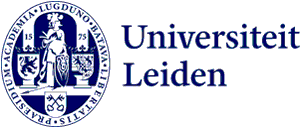
Psychology Elevator Pitch: How do we solve social dilemmas?
A clean street, public transportation, or taxes: these are all public goods that keep society running. But how do people decide which public good to invest in, if at all? These are the kind of questions PhD student Laura Hoenig explores.
Most people have encountered it in high school or during their studies: they’re assigned a group project, and suddenly find themselves doing the work of three classmates. Or maybe they were the one free riding on the hard work of their team member. The good grade that follows may feel bittersweet, as it’s not a result of everyone’s hard work. Rather, few people reap the benefits of an unequal situation.
Social dilemma
This is an example of a social dilemma, and social psychologist Laura Hoenig researches them on a broader scale. She looks at how people perceive public goods, and to what extent they are willing to contribute to them. What are the factors that make people want to contribute? What is the role of political ideology in this willingness? And are people more attracted to public goods that benefit most people equally, or some people more than others? ‘Some research has investigated cooperation in social dilemmas as if there is only one choice—contribute to the common good or free-ride. That humans, leading multi-facetted lives, are faced with multiple public goods and must choose in which to invest their resources, if at all, is something my co-authors and I were excited to explore.’
Psychology Elevator Pitch
Want to get to know Laura? Ride along in this Psychology Elevator Pitch.
New paper: when do people want to cooperate?
Hoenig recently published a new chapter of her dissertation: Equality and Efficiency Shape Cooperation in Multiple-Public-Goods Provision Problems. In it, she explores what are the defining factors of public goods that decide whether people want to contribute on one or the other, such as state defense or healthcare.
People prefer where they benefit more
Her study found that people want to cooperate when such a provision is efficient, so it gives good returns, and when these returns are equal for everyone in their group. However, if there is an efficient public good that also benefits some people more than others, the people who benefit more tend to prefer this choice. On the other hand, the people who benefit less from such a public good, tend to prefer the one that provides equal returns to all, regardless of the efficiency. These patterns are reflected in peoples’ expectations, norms, and voting preferences for reshaping the experimental scenario.
Cooperation
‘While these patterns of cooperation may be disconcerting—they could harm the weakest in a group, undermine group cohesion, and seed conflict—we also find something that can be easily overlooked: When group members have multiple public goods that are misaligned in terms of efficiency and equality in returns, overall cooperation is highest. In single-public-good provision problems, individuals choose between selfish keeping and cooperating on group welfare. In multiple-public-goods provision problems, individuals choose which public good to cooperate on. And to quite some degree, individuals cooperate on both, keeping less to themselves.’
Read new paper Equality and efficiency shape cooperation in multiple-public-goods provision problems in Journal of Experimental Psychology.
